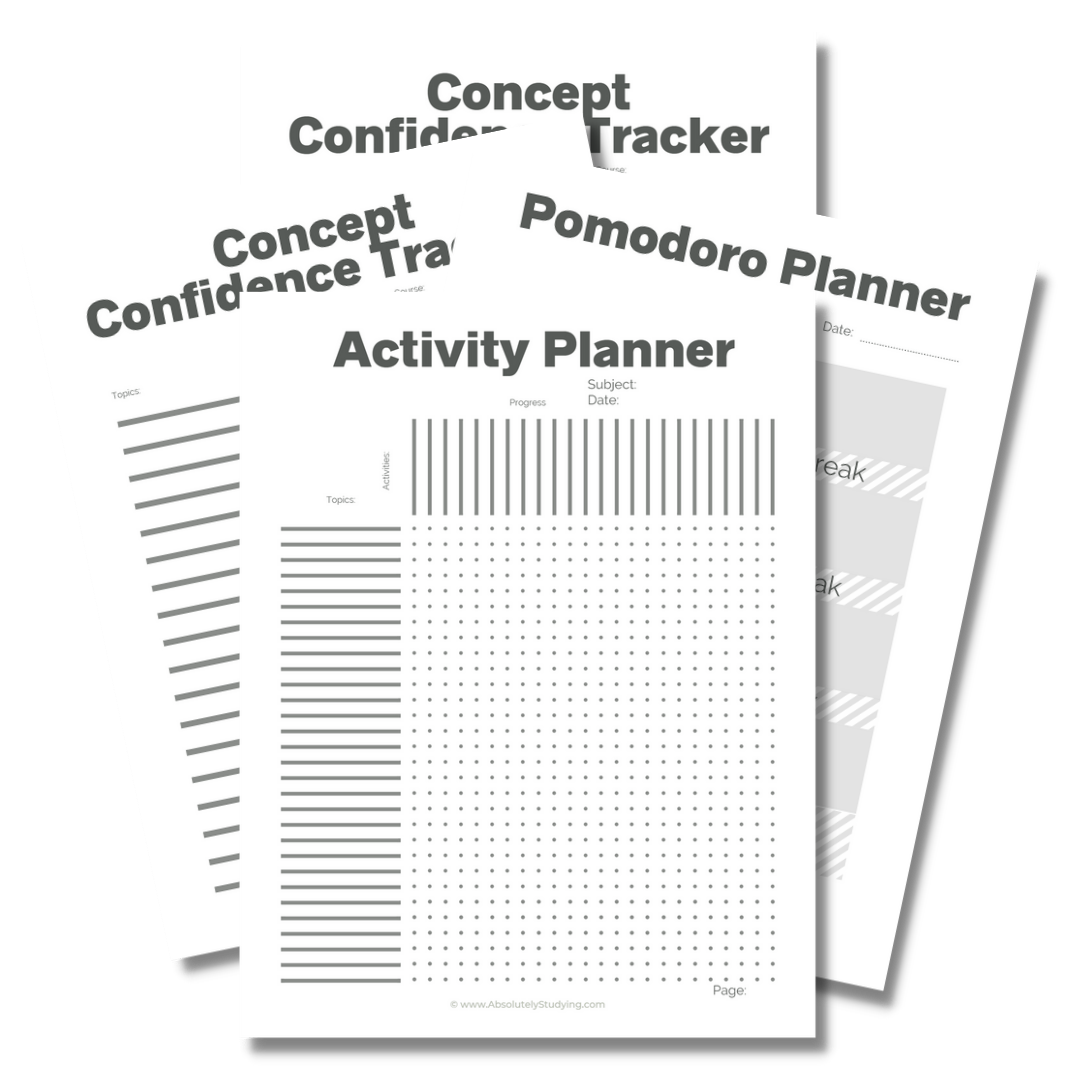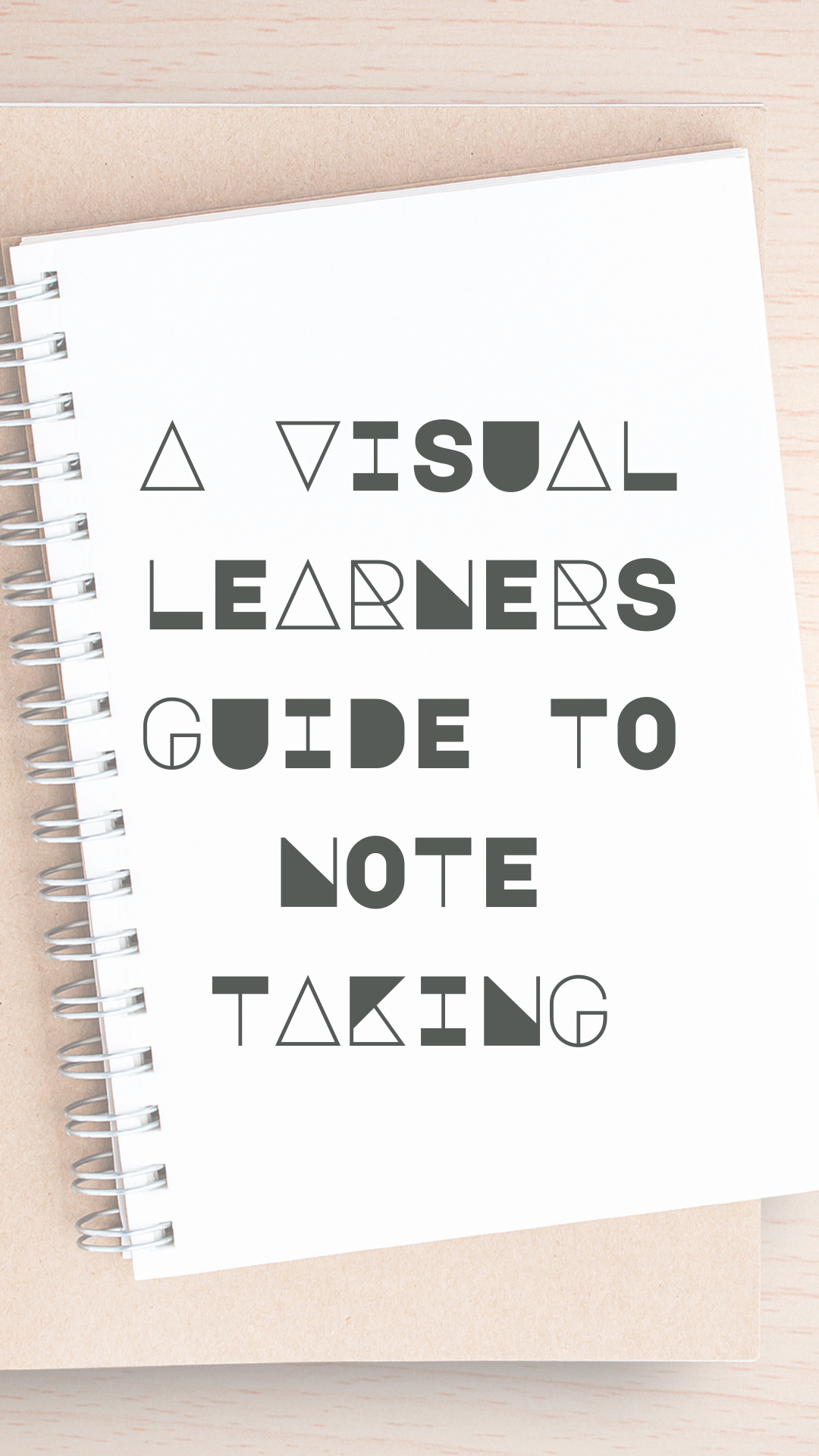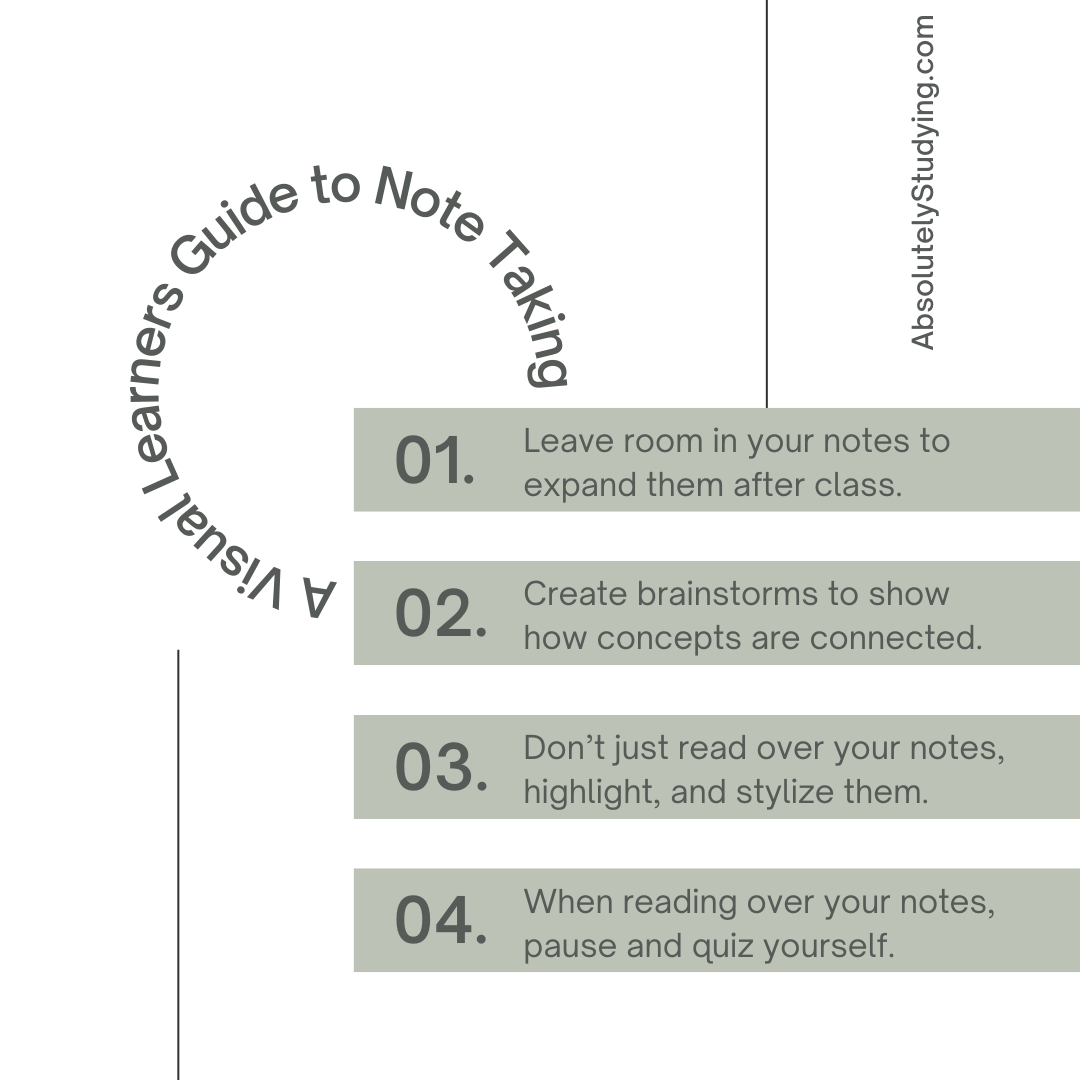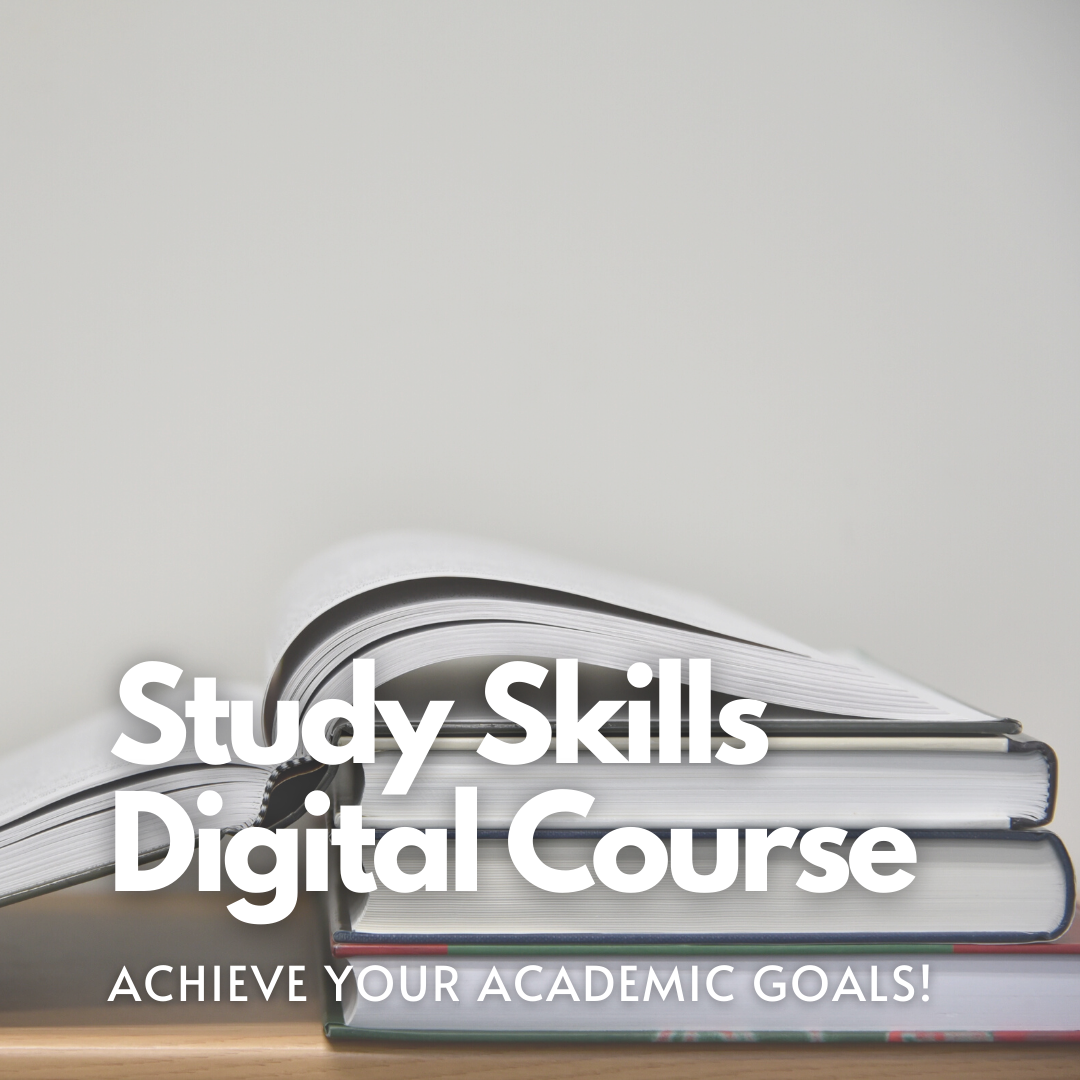The Best Note-Taking Methods for Visual Learners
The Best Note-Taking Methods for Visual Learners
Tips for note taking that are especially suited for your strengths as a visual learner.
Everything you need for the semester you want!
This bundle includes:
The Syllabus Study Planner
The Pomodoro Planner
A Confidence Tracker
A Q&A planner
The “Get Organized Checklist”
and more!
This workbook is full of super useful resources that can be applied to every aspect of your day.
* Disclaimer * Some of the posted links are affiliate programs. By clicking these links, I may receive monetary compensation. This will not alter the price or change the buyer's experience.
Visual learners often struggle with note-taking. It’s difficult for us because we have a hard time reducing our visions into words. This can lead to confusion when reviewing them during study time, when we can’t recall the images that inspired them.
We have to be able to see the information to truly comprehend it, even if it is in our minds. Pictures and models of concepts are critical to our understanding and interpretation. We require illustrations, demonstrations, and the ability to move the information around and see it from all angles.
Lectures are both a blessing and a curse for the visual learner. You can get pictures from the slides. Still, you have to put all of your learnings into words. You leave the lecture hall with pages upon pages of notes that you now have to find a way to take in and understand, which can make your study sessions overwhelming.
If you’re running out of study activities to cycle through, pick up this free study guide and activity tracker. It has more than 20 different study activities that you can track across each concept required to study. Download yours here.
Today, we will discuss tips for note-taking that are explicitly suited for visual learners. These will show you exactly how to improve your note-taking skills so you can excel in your classes.
DOWNLOAD NOW: FREE STUDY PLANNER & ACTIVITY TRACKER
Download your free study planner and activity tracker.
Everything you need for the semester you want!
What is a Visual Learner?
Visual learners learn best by being able to see the concepts under study. These can be either 2-dimensional pictures or 3-dimensional models. Visual learners often must visualize the idea or process before they can really grasp what they are trying to learn.
People often have a mixture of several learning styles. You might find that you are excellent at learning just by hearing, or you need to also touch and interact with a model. That’s okay.
Incorporating different practices for each learning style that suits you is a great way to deepen your understanding of a concept and make study time more enjoyable.
Strengths of Visual Learners
Visual learners often excel at using visual elements and presentations to describe a concept or idea. Anything you can see or picture in your mind will help you better understand and interpret the material. If you are a visual learner, you might find you are attracted to:
Pictures
Colours
Charts
Tables
These elements allow you to see and interpret the information at a glance.
Visual learners function best when they can see what they are learning, whether looking at a picture or watching a video. Being able to see the information you are trying to absorb and have it demonstrated will help you clarify your understanding.
I have to be able to picture information in my mind. If I can’t “see” it, It does not exist, and I don’t understand it. I am a hardcore visual and kinetic learner. There are many times when someone tries to explain something to me, and the words mean absolutely nothing. I have to stop, picture it, and sometimes even draw it out, then it exists.
Visual learners want to see it, doodle it or draw it out. Once they can see it in their minds, they own it. We can manipulate it, analyze it, and understand it.
How to Take Notes Efficiently as a Visual Learner
If you are a visual learner, there are things you can add to your notes to level up your understanding. Try these practices during your next study session, or incorporate them directly into your lecture notes.
Try using a Cornell Notes template for structure.
Cornell notes are a note-taking strategy developed by Cornell University. It divides your paper into three sections:
Notes
Cues
Summary
You add your regular lecture notes in the notes section. You can do this while in class or reading your textbook, in any style you are comfortable with.
The cues section is reserved for words or short phrases that can help to trigger recall. In this area, you can add things like vocabulary with or without the definition, doodles to jog your memory, or any other symbols. It is also an excellent place for laws, rules, theories, and phrases that have to be remembered. Only add short, concise, point-form sentences in this area.
The summary section is exactly as it sounds. This section should be completed later, during your study session. Read through the page and summarize the concepts discussed in your own words. This exercise helps ensure you understand the idea and that you are not just memorizing the facts as they were presented.
Reading strategies that help visual learners retain information.
Reading chapter after chapter of your dry, boring text is the worst part of any class. If you struggle with reading your textbook, you can implement strategies to make reading and understanding each chapter easier.
Some visual learners might be slower readers. That is not to say that their reading comprehension suffers, but they may take a little longer to get through the text.
If this is true, you will want to make the most of your reading time. Incorporating multiple strategies into your reading sessions can help you use this time more efficiently.
The easiest method to implement is skimming and scanning the passage before you read it. This allows you to prime your brain to anticipate what you are about to read. This strategy can help you to remember the information more efficiently the first time you read it.
Look over the portion of text you are about to read. Stop at any headings or subheadings and read through them. Think about what they are saying and what they might be referring to. Think about what you will learn when you read that section, and what information you already know it might build upon.
Stop at any diagrams and charts and look them over. Read the captions at the bottom and see if you can follow through before you read the section. Here, we are priming your mind to get ready for the information before you take it in.
When you do this, as you read, you remember the information you primed rather than force new details in. There is already a foundation laid for this new information to be built upon so you can assemble it more easily.
Highlight and stylize your notes.
Colour coding your notes is a great way to relay information instantly without having to read. This is done most efficiently when you use the same colour-coding system for all of your notes. We have an entire article on how to incorporate colour coding into your note-taking strategies.
My favourite highlighters are the Zebra Mildliners. I love the range of hues they come in. This way, I can change the mood and theme of my notes without changing my colour coding strategy. I can still use pink for terminology, for example. The fact that I can switch between different shades of pink allows me flexibility while staying faithful to my colour key.
How to colour code your notes
Creating charts that compare and contrast information is another terrific way to depict information visually.
Start with two similar concepts and list out all of the critical, relevant information for the first one. Then, beside it, list how the second concept relates to those specific points. Are they the same? Does that point not exist?
You can do this on any topic that is relevant. You don’t have to limit it to two. Compare as many as are necessary.
These are also great for testing yourself when your exam is coming up.
Diagrams are the staple of the visual learner. Try to incorporate them at every opportunity.
Whenever possible, create your own diagrams. They might be based on an existing illustration, but draw them out yourself. Drawing it out will help you remember better because you are more intensely studying it than you would be looking at it alone. Learn more about how diagrams help you study here.
First, you have to look at the reference material, then imagine how it will look. Finally, you have to actually draw it. The drawing process takes a lot of focus for you to make each line. You will by paying undivided attention, making it more likely that you will remember it.
If you are looking for more ways to enhance the effectiveness of your notes, try this article, which lists 10 reasons to leave extra space in them.
Flashcards are a great Active Recall Technique for visual learners.
Transform your notes into flashcards that you can quiz yourself with. Use one of your study sessions to create the flashcards. Afterwards, you can quickly review and study the material anytime and with little or no setup.
Flashcards can be taken anywhere for a quick study session. They are a great way to gauge how much you know and how quickly you can access the information. Flashcards can also be used in many ways. For more ideas, check out this article on 10 ways to use flashcards.
10 ways flashcards
I prefer to use paper flashcards because they are more engaging to create. When I write the cues on the cards or draw the diagrams, I absorb the information much more efficiently.
I also find using apps on my phone distracting. I will pick it up to start studying, and before you know it, I’ve lost an hour on Instagram or TikTok. I have an extremely short attention span, so putting my phone away during study time is a must.
We have a practice quiz template in our study planner and activity tracker. You can easily use this template to create flashcards for any subject as you read your notes or textbook. Download it here.
5 Tips to Transform Your Notes Visual Learner Style
Leave room in your notes and expand them extensively after class. You can use this opportunity to add things to your notes that you would not usually jot down in lectures.
Create brainstorms to show how interrelated concepts are connected. Add charts that compare and contrast similar theories.
Check out this article that lists 10 things to add to your notes to increase your understanding.
Don’t just read over your notes, highlight, and stylize them as you go. Create a colour coding system that you can use across all your classes. Limit your colours to no more than five and have each mean one thing.
Try not to have more than one concept per page of your finalized notes. This gives you room to expand them as your knowledge grows and avoids confusion between similar topics.
Study Skills Digital Course
Learn how to create a stress-free comprehensive strategy!
Take Your Study Skills to the Next Level
If you're a visual learner, mastering the right note-taking techniques can transform the way you study. But what if you could take your learning even further?
That’s where my Study Skills Digital Course comes in! This self-paced course is designed to help you:
Develop effective study habits tailored to your learning style
Master note-taking techniques that improve retention and recall
Use visual tools like mind maps, concept charts, and colour coding
Improve time management and create a stress-free study plan
Build confidence in active learning strategies that work
Bonus: The course includes a printable study planner & note-taking templates to help you stay organized and make the most of your study sessions!
Ready to study smarter, not harder? Click here to enroll in the Study Skills Digital Course today!
Visual learners can incorporate several simple strategies into their study sessions to improve efficiency. These strategies can be extended to note-taking to make it easier and more enjoyable. Staying more engaged in note-taking will translate into better absorption and understanding of the class material. Learning to improve note-taking skills simply means finding strategies that work for you and engage you.
Don’t forget to pick up our free study planner and activity tracker. It has more than 20 different activities that you can track for each topic. Make sure you study each subject in new and exciting ways. It also has a perfect template for creating practice quizzes and flashcards. You can download it here.
I would like to be transparent so that there are no misunderstandings. As an affiliate, I may earn a small commission from any products linked in this post. This is not a sponsored post, and I was not asked to recommend these products. These are products that I genuinely love and want to share with my audience.














